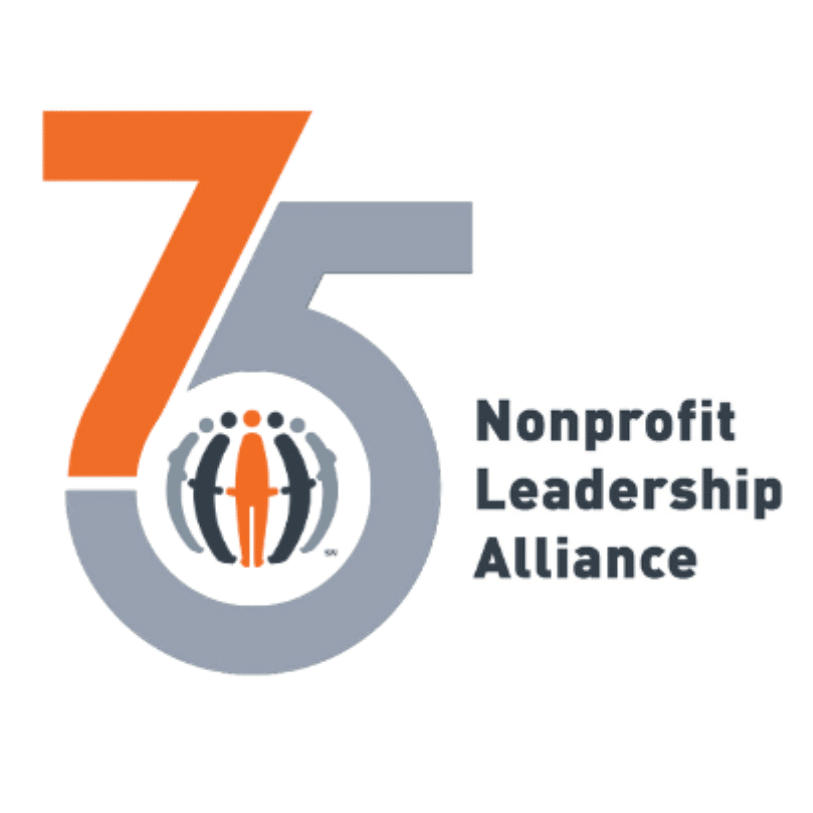When did you last see a pilot?
Except maybe a “thanks for flying with us” as you deplane, they are behind a locked door separate from the crew and passengers. It’s the crew that knows who is on board, what baggage they brought, their feelings about flying, and how to help people cope with turbulence.
When the Captain comes on the PA system to inform everyone about the flight plan, they often sound like ‘the adults’ in the Peanuts specials. And the crew is left to interpret.
This can be how some CEOs function in their organization. And in my experience, it’s rarely successful.
Shared leadership, open communication, a deep awareness of who is working for you, and the past experiences (both positive and challenging) that they bring to the team, are critical to the development and maintenance of a healthy organization.
I have extensive experience leading a growing organization that fosters and nurtures a healthy environment. But that’s not what I inherited, and it took time, intention, and commitment on everyone’s part to get there.
Unless you’re the first Executive Director or CEO of your organization, you are the pilot on a connecting flight. I was onboarded into an organization that had a deep schism between the Executive Director and the staff. The organizational culture was one of fear, poor communication, an abundance of rules, and micromanaging. There were few relationships across departments or levels of the organization.
Involving Everyone on the Plane
After a few months of working to build trust and communication, I decided to form an Advisory Committee made up of people who were not in “formal leadership positions.” I handpicked them, from across all departments: people who had been here for a long time, newbies, people with informal leadership, and people who were viewed as troublemakers.
And the majority of the management team was anxious about this new Advisory Committee. What would this committee tell me? What would their influence be? What was the purpose? Why would I want to interact directly with nonmanagers?
The advisory group, in its early days, spent a lot of time on values clarification and team-building exercises. We built trust, formed relationships, and practiced healthy, open communication. And then we got into the broader issues facing the organization. We worked to dismantle habits and norms we no longer wanted and built new ones.
Simultaneously, the management team was doing this same type of work. I pushed some of them hard to give up their default/learned style of supervising. We worked diligently to envision a new way of interacting and supporting our team: shared leadership.
We wrestled with hard questions… “Does this policy make sense in practice? Does it promote shared leadership, respect, professionalism, and open communication? If not, what purpose does it serve, and do we value that purpose?”
There are leaders, at all levels, who are trying to heal the wounds of their past experiences. You’ve probably worked for at least one of them. The bully bosses. The narcissist. The one who has poor communication skills. The one who thinks fear and control are synonymous with leading. These types of leaders and organizations are never as successful as they could be.
All of this learned toxic behavior can be unlearned. And set aside. But it takes time, intention, personal reflection, and deep commitment. But if we’re not intentional, we will carry this baggage onto every flight and into every situation.
And our crew, passengers, and plane will suffer.
People bring themselves to every situation. Good, bad, or indifferent, our past work and life experiences influence how we exist in the present. We learn how to be a worker – and how to be a leader – from watching others. We either model their behavior or vow to never act like them. Sometimes both.
Strategies for Building Relationships and Open Communication
We all know the importance of building authentic, respectful relationships. But how do you do that? Especially if that hasn’t been your experience in life or work.
What is servant leadership? Why is it effective? How can we tap into the fact that most people rise to your level of expectation, and are so much more committed, effective, and efficient when they feel seen, respected, and trusted?
The Board hired me, and they can fire me. In my opinion, I don’t work for them. I don’t even work for those we serve. I work for and serve the staff. It’s my job to ensure they have everything they need to be successful. It’s my job to run interference between them and whoever is creating barriers that impede their ability to be successful. I do not make this organization the success that it is: perfect monitoring reviews from the State, clean audits, excellent staff retention, and strong positive feedback from our partners and clients. They do. Day in and day out, by what they do. I believe in taking all of the blame and none of the credit.
To me, the most important thing is to be yourself. As the leader, remember what it was like to be the follower. What motivated you? What annoyed you? And most of it, if we’re honest, is so simple. Just don’t be a jerk.
I have been in countless situations where people have complained about bosses who didn’t speak and were rude and disrespectful. They would walk in and out of the building, past offices, and never say “good morning, hello, or good night.” It’s so easy to practice simple social interactions. People want to be seen, it’s a metric for being valued and appreciated. And it goes a long way.
As a leader, you must authentically share yourself. Be genuine and meaningful. Model and reinforce that you’re human too. One morning around 9:00 a.m., I was leaving the building for a meeting. I overheard staff complaining about the long day they already had and how they were ready to leave. I smiled and said, “I agree, take me with you, let’s get out of here.” We all laughed. Let your team know that you have days when you are done, too.
And the fact that you recognize it and give your staff permission to see it means everyone can be more relaxed. By acknowledging that we all have “one of those days” it can be addressed, strategies developed and implemented, and people seen and heard.
Over-praise and under-criticize. When your team makes a mistake, they already feel bad. The tape in their head is already beating themselves up. For most people, it’s repetitive and harsh. There’s no need for you to reinforce it. Recognize the error. Remind them that everyone, including you, makes mistakes. Then move on to work together to find a solution. This enables staff to feel secure in stretching and trying new things and admitting their mistakes. It fosters innovation.
When you don’t know something, admit it. And ask who on the team does. If it’s a new situation and no one knows, own that too. I often say, “We’re intelligent people and working together even more intelligent. We can figure this out.” And we do.
In the process, we have nurtured and developed our team, learned more about each other’s strengths and growing edges, and built trust.
I started my career as a 22-year-old with a Master of Social Work, supervising nearly 10 people, most significantly older than me, working all over Chicago. A mentor pointed out what should be obvious, but often isn’t, “If no one is following, you’re not leading.” Sure, you may have positional power. People may defer to you because of your title. But that doesn’t mean they respect you, trust you, or are following you.
You can imagine, I learned a lot in that chapter of my career.
There’s a quote that hangs in my office, “If you and your boss always agree, one of you is not necessary.” I love that it doesn’t say which one isn’t necessary. It is a central tenet to my understanding of shared leadership and open communication. And the philosophy I’ve held and practiced since those early days in Chicago. It’s how I help develop my team, support their ideas, and stay intentional about innovation and growth.
Celebrate successes. All of them. Make it a big deal. We have “elevator meetings” to congratulate a department for a perfect review when we secure a new grant, or something wonderful happens. We gather outside the elevator in the lobby area, clap, cheer, and celebrate with each other. We even have a disco ball dangling from the ceiling. It’s the little things that go a long way.
These simple suggestions – seeing someone, respecting their ideas, forming genuine, trusting relationships, and promoting a culture of innovation – are the foundation of a successful organization.
It’s how we open the cockpit door and meaningfully engage with everyone on the plane. And it’s how you ensure a successful flight and landing.
About the Author:
Christy S. Renjilian, Executive Director, Community Connections for Children
Christy S. Renjilian holds a Masters in Social Policy Analysis from the University of Chicago and has served as the Executive Director of Community Connections for Children since 2011. She previously worked at the United Way of York County, and for YMCAs in several cities across the US.
Community Connections for Children, Inc. (CCC) is a nonprofit with a staff of 85 and a $144 million budget. They serve childcare providers and low-income families overseeing Child Care Works and Keystone STARS, Resource & Referral Services, CACFP, and the Parents as Teachers Program in thirteen counties in South Central Pennsylvania.
Did you enjoy this story?
Get nonprofit tips and tools delivered right to your inbox by joining The Nonprofit Leadership Alliance Newsletter. Our bimonthly newsletter will make sure you know what’s happening with our network of social sector leaders.
Optimizing the Donor Journey with Your Website: 5 Steps
In today’s fundraising landscape, your nonprofit’s website is more important than ever for facilitating the donor journey. Why? It’s simple—online giving rose from almost 8% of total giving in 2022 to over 12% in 2023
Training Your Nonprofit Team to Use Direct Mail Appeals
Although technology has transformed communication, there’s still something special about receiving a letter in the mail. The anticipation of opening an envelope addressed to you creates a unique connection. For nonprofits, direct mail appeals
Strategic Nonprofit Growth: Navigating the 7 Stages
Established nonprofit organizations play a vital role in addressing social issues, driving positive change, and enriching communities. However, even organizations with a long history of impact must continue to evolve, adapt, and innovate to remain



